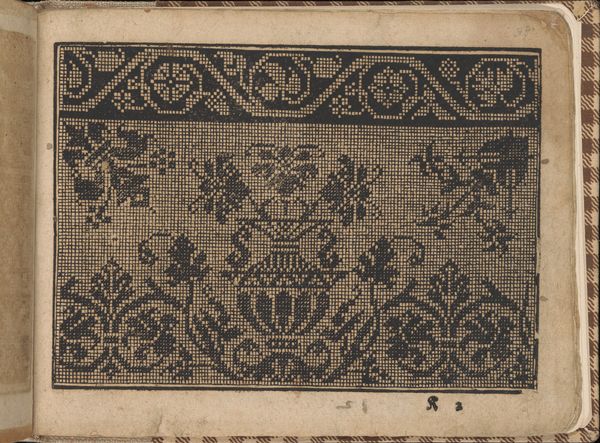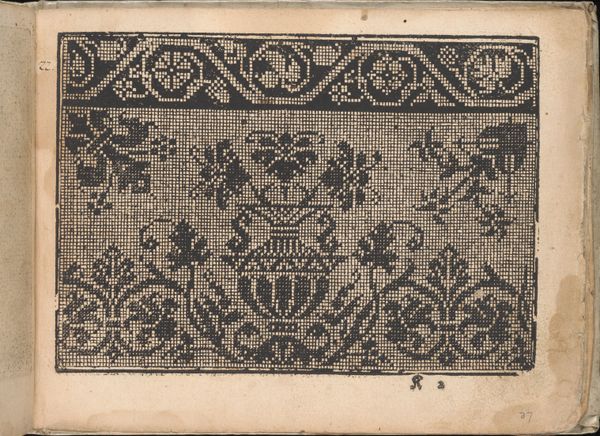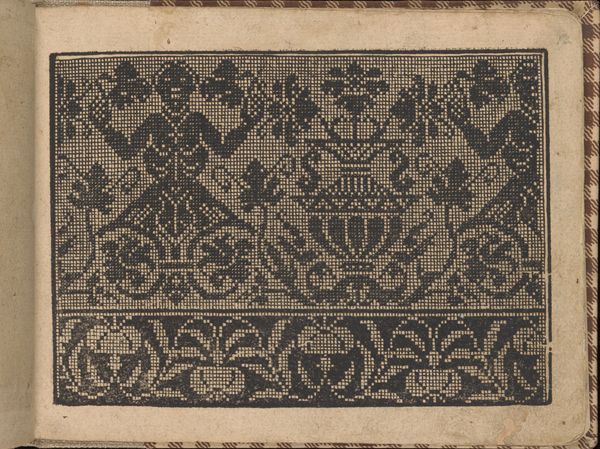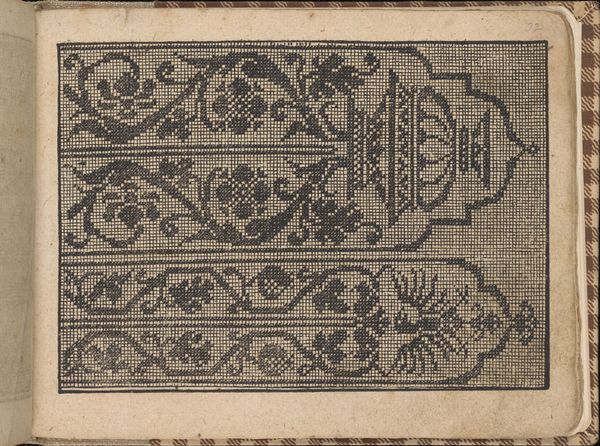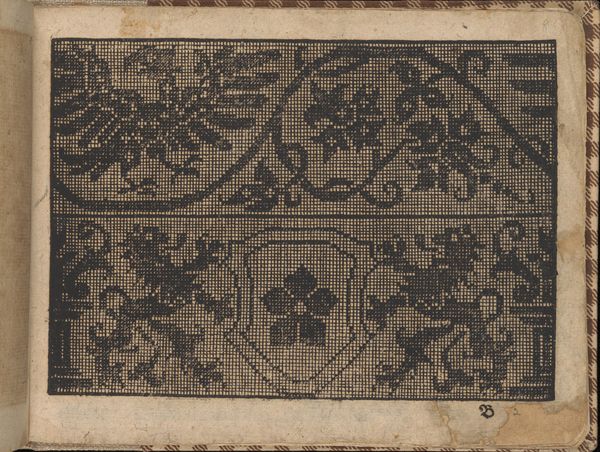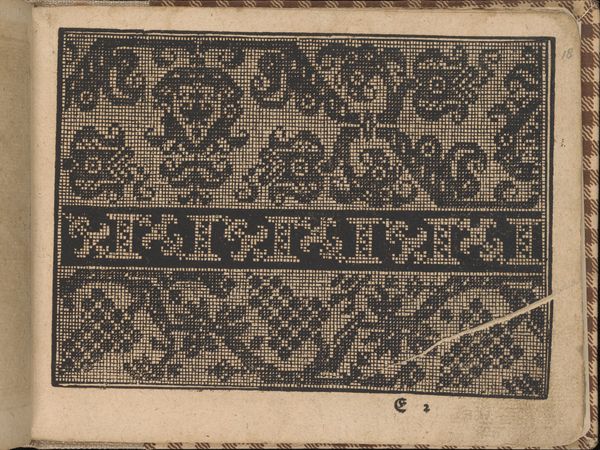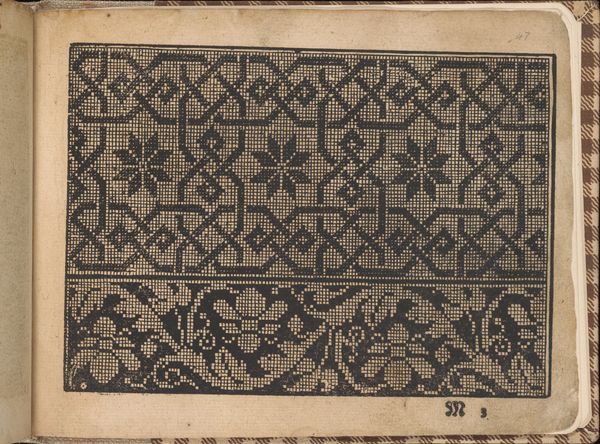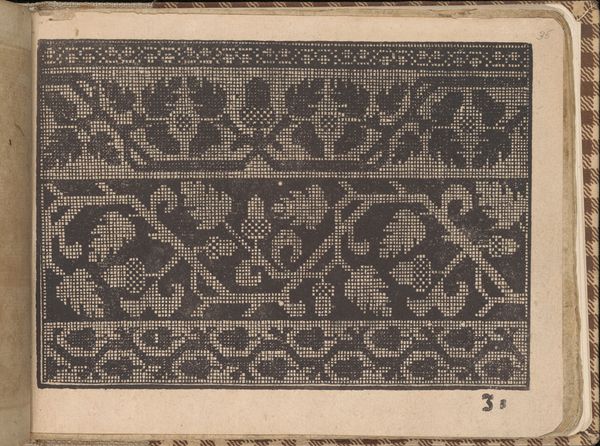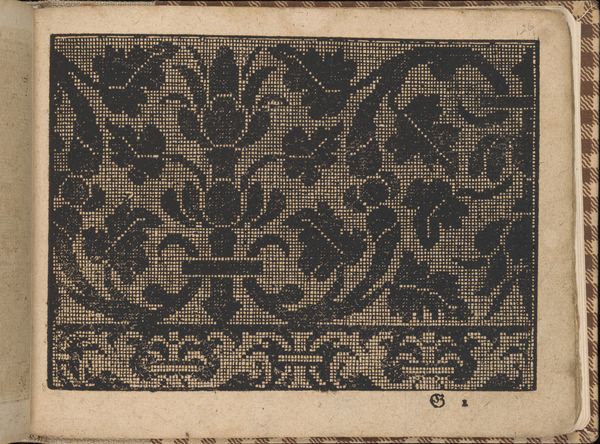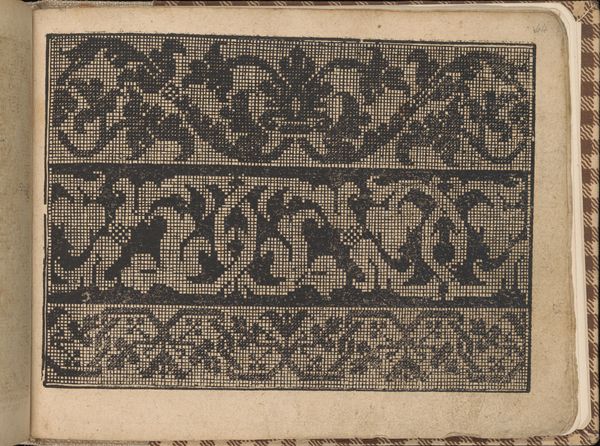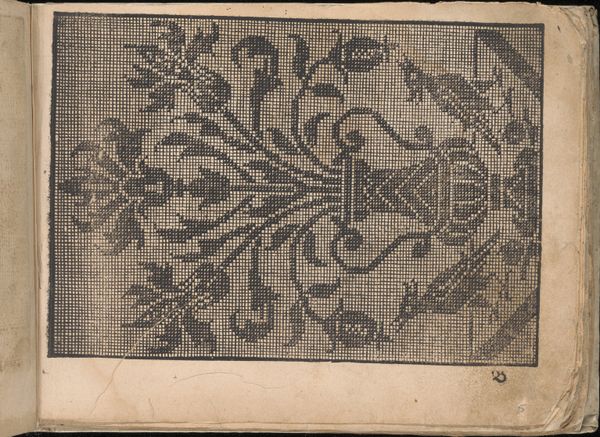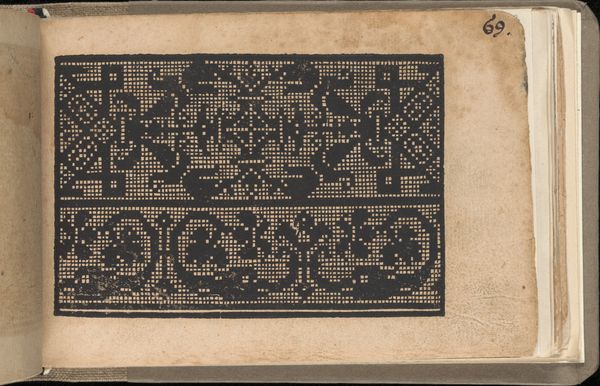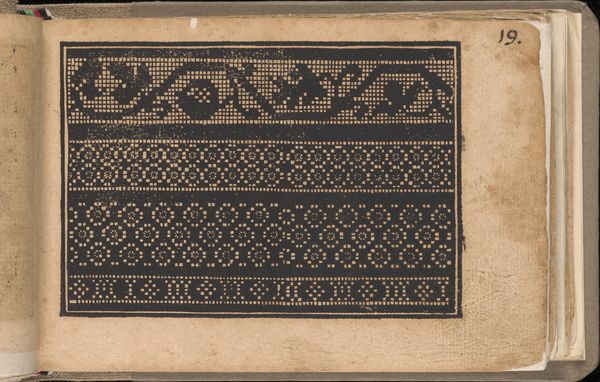
drawing, graphic-art, print, paper, woodcut
#
drawing
#
graphic-art
#
medieval
# print
#
paper
#
coloured pencil
#
geometric
#
woodcut
#
decorative-art
Dimensions: Overall: 6 5/16 x 8 1/4 in. (16 x 21 cm)
Copyright: Public Domain
Editor: Here we have "New Künstlichs Modelbuch (Page 7 recto)" created around 1600 by Bernhard Jobin. It's a print on paper, a woodcut actually, from a model book, housed at the Metropolitan Museum of Art. It looks almost like pixel art! The pattern is quite striking, almost like a digital tapestry precursor. What can you tell me about it? Curator: Indeed. Model books like this were essentially pattern banks for artisans. They were crucial for disseminating visual ideas before widespread industrial printing. Notice how the grid, rendered by the woodcut, is very present. This grid is not just a practical element for copying; it becomes an integral visual component. Do you notice other symbols interwoven here? Editor: I see floral and geometric shapes combined. I guess I hadn’t considered the grid itself as a symbolic element. Curator: Consider the floral motifs: flowers often signify renewal, beauty, and even specific religious allegories depending on their type and arrangement. Combined with geometric forms, what does this contrast evoke? Perhaps order imposed on nature? Craft and creation? Editor: Hmm, maybe it’s about taking something natural and organizing it into something humans can recreate through needlework or other crafts. And, it provided examples to other artists... almost like a logo catalogue of the era. Curator: Precisely! These images held practical and cultural power. It embodies not just a set of patterns, but a record of visual culture at the cusp of mass production, a cultural memory etched into repeating motifs. Editor: This was so helpful. Now I see beyond the pretty pattern; it’s a whole story within the image! Curator: Agreed, and this "story" of interconnected symbols reminds us how artisans participated in, and shaped the culture of their time.
Comments
No comments
Be the first to comment and join the conversation on the ultimate creative platform.
